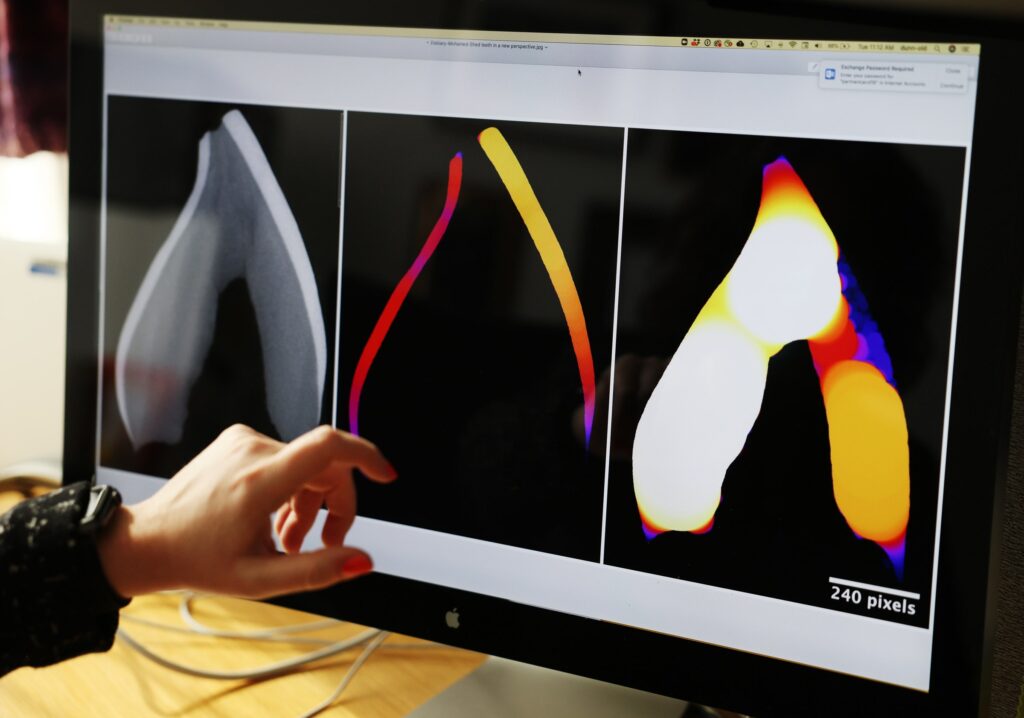The autopsy, which comes from the Greek word autopsia , meaning “the act of seeing with one’s own eyes,” is a centuries-old technique and a cornerstone of medical diagnostics. Autopsies can help inform treatments, sharpen diagnoses, and correct misdiagnoses. Without them, death often remains a dense, impenetrable mystery.
Nowhere is this more true than when the individual in question is a child—and even more so if that child never gets the chance to leave the womb. But an autopsy is invasive, involving cutting open the body to inspect the organs inside. In the case of children, the idea can horrify parents, even if the cause of death is unknown.
“More and more parents are finding that socially unacceptable, or feeling that they don’t want to put their baby through that,” says Owen Arthurs, a professor of radiology at Great Ormond Street Hospital, a children’s hospital in London. In the United Kingdom, more than half of parents decline an autopsy for a stillborn death, and three-quarters for a neonatal death, where the baby dies within the first 28 days of life. Acceptance rates have been declining in the UK, the US, Europe, and beyond for the past few decades, reaching historical lows.
Several factors go some way to explain this: For one, in 1999 it was discovered that the organs from a number of children had been unethically kept by a rogue doctor at Alder Hey Hospital in Liverpool in the UK. Plus, many Jewish and Muslim parents refuse the procedure on religious grounds; in these communities, after someone dies, cutting their body is prohibited , and there is also an imperative to bury the body as soon as possible after death. But for parents, losing a child can be made even worse by fears that there was something they could have done to prevent the death.
That’s where Arthurs and his team at Great Ormond Street Hospital are trying to help. They have pioneered an approach that does away with the need for a full autopsy. Through a combination of imaging techniques that reveal details of the inside of the body—including ultrasound, MRI, and CT scans—the team can determine the cause of death in a child with as much accuracy as the traditional invasive autopsy.
If the imaging isn’t enough, the team can use much smaller incisions to take organ samples to be tested. “Even though we don’t always find a cause of death, what we got from parents’ feedback is that finding nothing is actually really helpful for them psychologically, because a lot of them think it’s their fault or something they did wrong,” says Susan Shelmerdine, a consultant academic pediatric radiologist with the team. “Just knowing it wasn’t something they did has actually been shown to be beneficial.
” Still, a typical CT or MRI scan doesn’t create detailed enough images to fully capture what may have happened inside the body of a very small baby. To rectify this, the team has pioneered the use of a newer imaging technique with very young children, called microfocus computed tomography, or micro-CT. It captures 3D objects in higher resolution, meaning the team can inspect small babies with nearly identical levels of accuracy as with an invasive autopsy.
If needed, a small-incision laparoscopic autopsy—keyhole surgery where the pathologist looks inside the body using a camera mounted on the end of a thin tube—can be used as well. Since 2012, the team has helped over 1,700 families, performing up to 300 noninvasive autopsies a year. The team has found that a less invasive autopsy approach is more acceptable to parents.
But the technique has its limitations. It doesn’t catch infections that may have played a role in a death, for example. And the approach is not offered everywhere.
“The challenge is that the service is only available in a handful of centers,” says Charlotte Bevan, head of the Saving Babies’ Lives team at the Stillbirth and Neonatal Death Charity in the UK. And even with the service, fetal death still often goes unexplained in about a third of cases. The team also uses the approach for forensic purposes in cases where a death is suspicious, seeing one to two cases a week.
Imaging can catch things an autopsy can’t, such as broken ribs. It can also help protect against biases that could sway an investigation into the suspicious death of a child: A 2021 study found that forensic pathologists in the US were more likely to rule a death a homicide rather than an accident for deaths of Black children compared to those of white children. Ciaran Hutchinson, a consultant pathologist who is part of the team at Great Ormond Street, notes that autopsies of fetuses or very young children are unusual in that almost every other medical investigation is driven by the doctor or the person in charge of the care—even a forensic autopsy is driven by the coroner.
But in the case of a perinatal autopsy, it has always been the parents who are in charge of the scope of the investigation. “It’s just that the options were limited to almost everything, or almost nothing,” he says—an invasive surgical procedure or essentially no autopsy at all. The less invasive autopsy falls somewhere in the middle, widening a spectrum of options for parents.
“We’re also offering them choice and control in a really traumatic situation they have no choice and control over,” says Shelmerdine. “So from a psychological point of view, it’s giving them that extra element of understanding and closure. ”.
From: wired
URL: https://www.wired.com/story/better-way-to-autopsy-kids/
